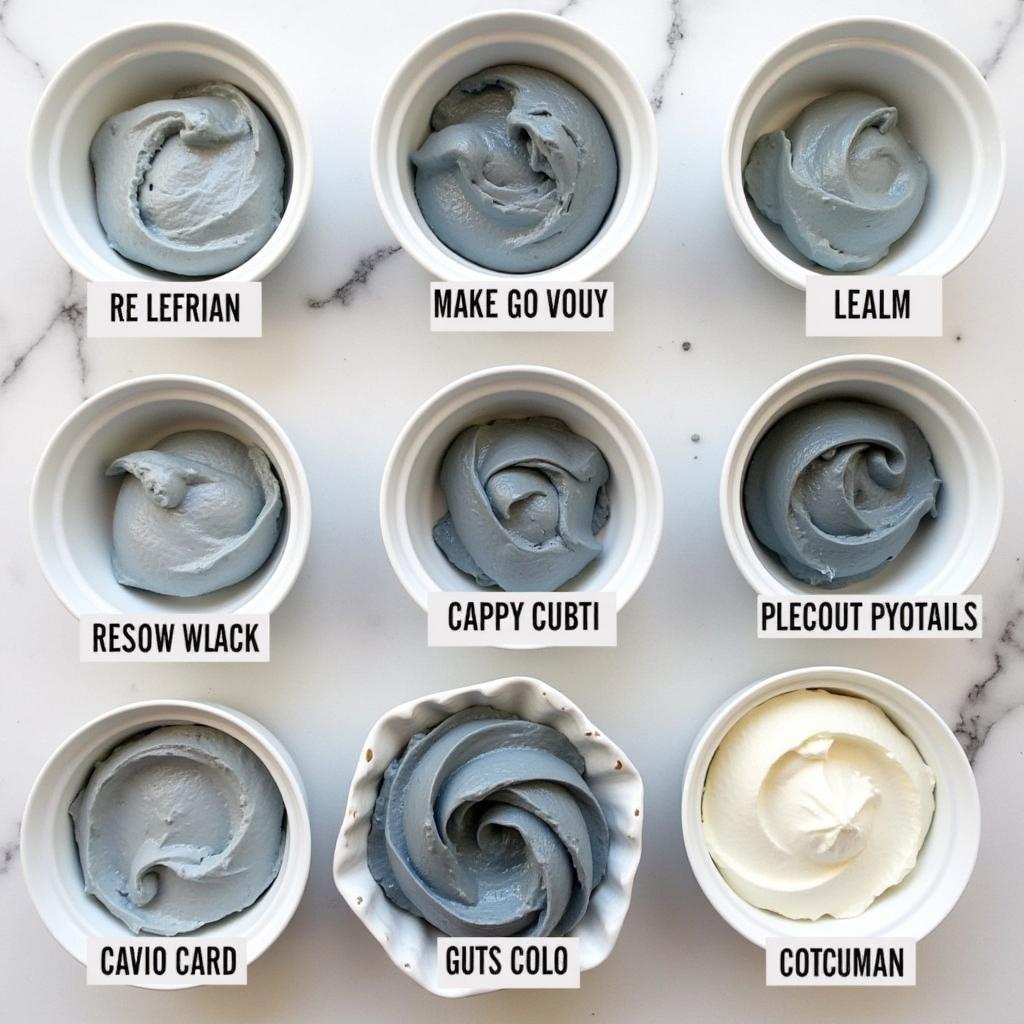Making grey frosting might seem straightforward, but achieving the perfect shade can be trickier than you think. Whether you’re aiming for a sleek silver, a warm charcoal, or a classic dove grey, this guide will teach you How To Make Grey Frosting With Food Coloring like a pro.
Mastering the Basics of Grey Food Coloring
Before we dive into the different methods, it’s helpful to understand the color wheel. Grey is not a primary color like red, yellow, or blue. Instead, it falls under the category of neutral colors, created by combining these primary colors in specific ratios.
Two Simple Ways to Achieve Grey Frosting
There are two primary methods to achieve that desired grey hue in your frosting:
1. Using Black Food Coloring
This is the most straightforward method, but it requires a light touch.
- Start with white frosting: It’s crucial to begin with a pure white base to avoid unwanted color distortions.
- Add black food coloring: Dip a toothpick into the black food coloring and then swirl it into your frosting. Remember, a little goes a long way!
- Mix thoroughly: Blend the color well until you achieve a consistent grey throughout.
Pro Tip: Always add the black coloring gradually, as it’s easier to darken the frosting than to lighten it.
2. Combining Complementary Colors
This method involves a bit of color theory but allows for greater control over the shade of grey.
- Choose your complementary colors: These could be red and green, blue and orange, or purple and yellow.
- Add equal parts: Start with tiny amounts of each color and mix them thoroughly into your white frosting.
- Adjust the shade: Add more of either color to achieve your desired undertone. For example, more blue will result in a cooler grey, while more orange will create a warmer tone.
 Different Shades of Grey Frosting Made with Food Coloring
Different Shades of Grey Frosting Made with Food Coloring
Troubleshooting Your Grey Frosting
- Frosting too dark? Gradually add more white frosting to lighten the shade.
- Grey looking muddy? You might have added too much coloring. Try starting over with a fresh batch of white frosting.
- Want a specific undertone? Experiment with different complementary color combinations to achieve the desired warmth or coolness.
Tips for Using Grey Frosting
Grey frosting provides a sophisticated backdrop for a variety of decorating styles. Here are some ideas:
- Metallic accents: Silver or gold sprinkles, edible glitter, or luster dust can elevate grey frosting to a whole new level of elegance.
- Floral designs: Grey frosting pairs beautifully with vibrant floral decorations, creating a stunning contrast.
- Geometric patterns: The neutral tone of grey makes it an ideal base for bold geometric patterns created with piping bags and different colored frostings.
Conclusion
Creating the perfect grey frosting is achievable with a little patience and these simple techniques. Don’t be afraid to experiment with different food coloring combinations and find the method that works best for you. Whether you prefer the ease of black food coloring or the nuanced control of complementary colors, you’ll soon be frosting your cakes with confidence and style.
For more tips on creating vibrant colors with food coloring, check out our guides on how to make orange out of food coloring and what food coloring colors make purple. If you’re feeling adventurous, learn how to make the color silver with food coloring for a truly eye-catching frosting. And if you’re out of black food coloring, we’ve got you covered with our guide on how to make grey with food coloring without black. Happy baking!
